Berlin has been on my mind. I just finished reading Scottish writer, Philip Kerr’s Berlin Noir Trilogy: an addictive, hard boiled historical fiction series about private eye Bernie Günter, as he descends into the dark underworld of Berlin in the 1920s and ‘30s. The trilogy reminded me about my own past journeys to Berlin, despite being considered unfit to be a German P.I. I can still recall in detail my first arrival to this intoxicating city. As the cab driver raced passed Tiergarten; the Memorial for the Murdered Jews of Europe; the Reichstag; and Brandenburg Gate, I asked about the new Kennedy Museum, now located in the Mitte (middle) district). Without hesitation, he offered his own personal narrative about JFK’s “Ich bin ein Berliner” speech of 1963: ‘Over 90% of the people in West Berlin were on the streets. None of us had ever seen anyone so charismatic. When Reagan did his “Mr. Gorbachev, tear down this wall” thing, it was nothing more than self-aggrandizing. It was more of what the Pope said.’
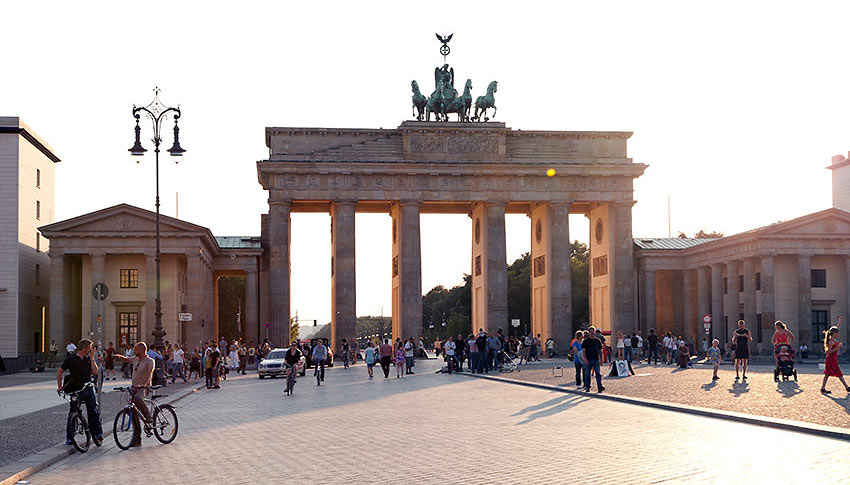
My mind raced back to a recent trip to Poland, where I learned that there were a number reasons why the Wall fell and the Soviet Union collapsed, but many would, indeed, point to Pope John Paul ll, a supporter of the anti-communist Solidarity, and his commanding words to the Polish people: “Do not be afraid,” which gave the devoutly Catholic nation courage to stand-up up the Soviet Union, eventually leading to its break from communism. As I continued to listen attentively to my Berlin cabbie, it occurred to me that no city had a greater impact on the 20th Century than Berlin. The centerpiece of two world wars and the epicenter of the Cold War, everything seemed to happen in Berlin.
Hitler and WWII
When the International Depression hit this nation in transition, Adolf Hitler and the Nazi Party were growing in popularity and poised to take control. The ageing president, Paul von Hindenburg, detested Hitler, dismissing him as ‘that Bohemian corporal’ with a bad Austrian accent. But he appointed Hitler as the chancellor of the liberal Weimar Republic, basically throwing him a bone, with the plan of pacifying his lust for power. Upon the death of Hindenburg, however, Hitler seized the presidency, combining it with his position as chancellor. The Nazis never liked Berlin, and it took them a long time to bring the city to succumb to their control. Berlin eventually became a Nazi showplace, while the real heart of Nazism was in the conservative city of Bavaria’s Munich. Considered the Texas of Germany, Hitler would stand on tables in beer halls, screaming his disturbing jingoistic speeches to drunken patrons about German racial superiority and the creation of a master race. Hitler became the absolute dictator of Germany, which led to the Second World War and the deaths of nearly 50 million people.
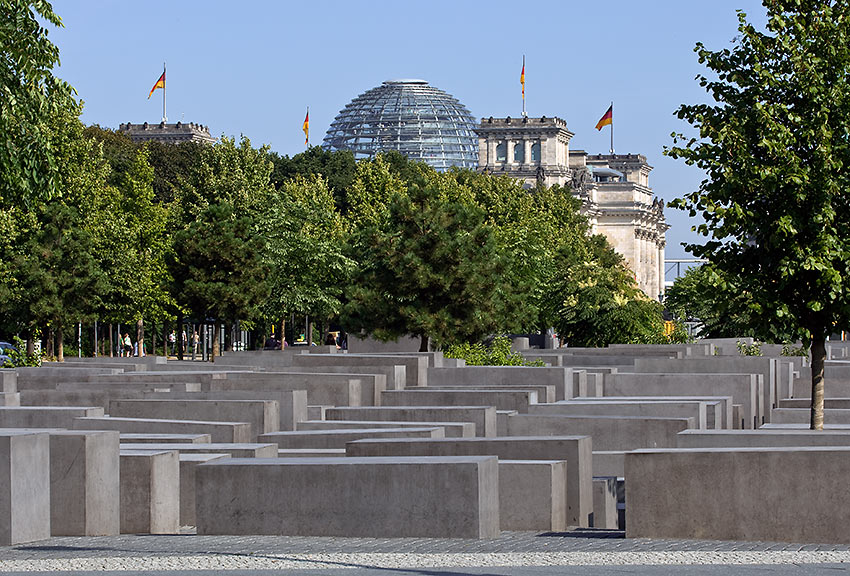
By the end of World War ll, over half the buildings in Berlin were destroyed by Allied bombings. “Rubble Women” (Trümmerfrauen) cleared away mammoth piles of rubble, eventually creating little grassy hills, giving the flat-as-a-pancake Prussia on the Plains, whose splendor has always been defined by its rivers, bridges, parks and architecture, a little beautified elevation. After the war, the city was divided into two, with East Berlin the capital of the communist German Democratic Republic, while West Berlin became an island in the capitalistic West of the Federal Republic of Germany, surrounded by the 1961-1989 Berlin Wall. When the wall fell, followed by reunification, Berlin soon became the capital city of the new Federal Republic of Germany. It’s hard to believe that it was almost four years ago that I attended the monumental 25 Years After the Fall of the Wall celebration in Berlin, with the emotive theme: To live in a world without walls.
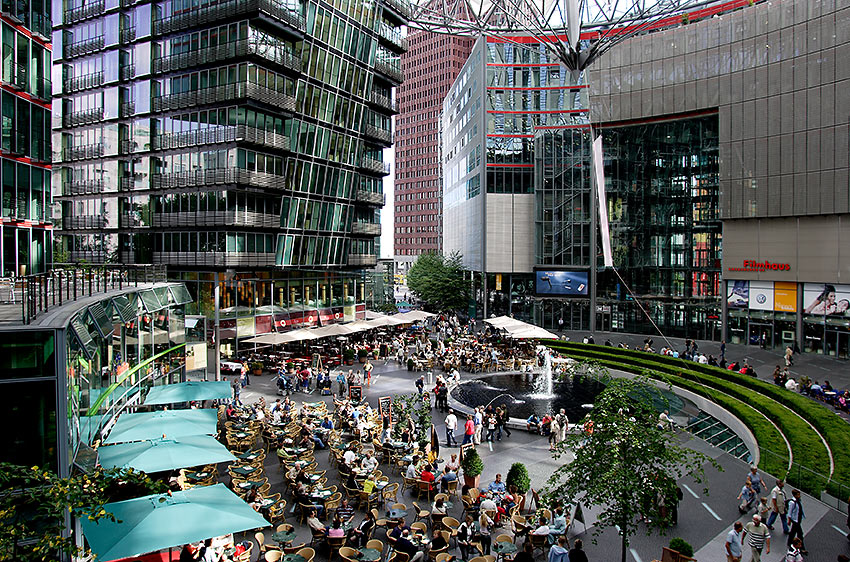
The Roaring Twenties
As the cab headed to my hotel, I could see the stunning urban development of Potsdamer Platz – once the former “no man’s land” (kill zone) between the walls – but soon I could also see the preservation of Prussian, Weimar Republic and communist era architecture. I thought of a time machine which would transport me back to Berlin in the Roaring Twenties. Due to the new Weimar Republic, Berlin in the 20s experienced a stunning period of great change and cultural upheaval. The liberal republic had a tremendous attraction for artists, with hundreds of thousands of immigrants arriving, bringing with them new artistic ideas. Berlin had more theaters than New York and more daily newspapers than London. The names of Bertolt Brecht, Max Reinhardt and Kurt Weill dominated the world of theatre, while UFA Film Company produced the films of F.W. Murnau, Fritz Lang and Ernst Lubitsch. Dadaism came to life in Berlin, as well as the German Impressionism of Max Liebermann. The 20s also brought the decadent nightlife of seamy bars, cafés and cabarets, 100,000 prostitutes, and not so secret sex clubs for all tastes. Greater Berlin in the 20s had almost four million inhabitants and became the cultural center of the world.
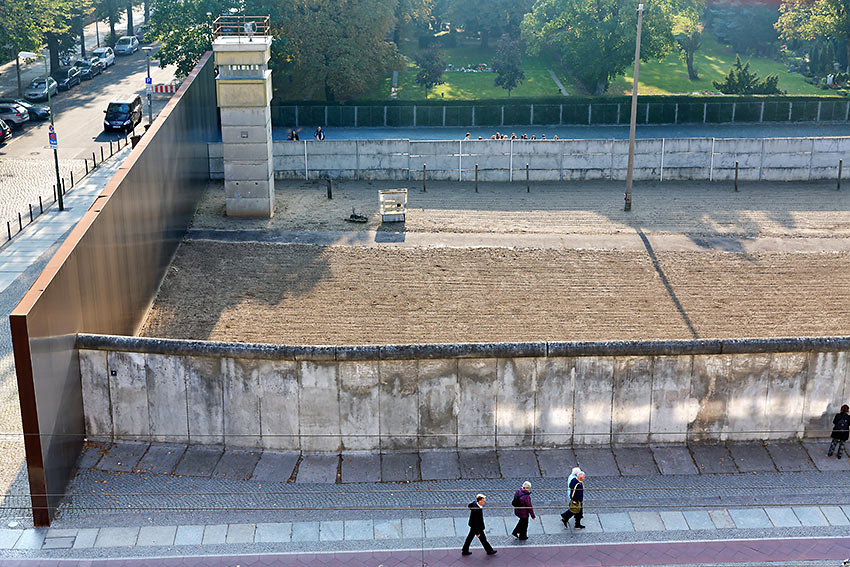
Berlin Today – No Longer “City of the Wall”
When the wall fell in 1989 and reunification took place, East Berliners poured into the affluent West (a showplace for Western capitalist values) for the new freedom and opportunities, leaving some of the East abandoned. The Kreuzberg District had been the center of western-style counter-culture when the West was an enclave, but now artists were hurrying back into the East, with Berlin experiencing a cultural and artistic vibrancy similar to that of the Roaring Twenties. As I explored the East’s Kiezes (neighborhoods), I saw forward-thinking artist communities and squatter communes. Art and fashion was starting right on the streets, demonstrated by locals with their direct Berliner Schnauz (in-your-face) attitude. Berlin soon become one of the most important cultural centers in Europe, and now just behind Paris and London as a tourist destination. Today, there still seems to be a cultural divide between the cutting edge, artist-driven East and the ultra-hip, high-fashion West, but this dichotomy is one of the reasons that the city is so alive. Quite simply, Berlin is my favorite city on the globe.
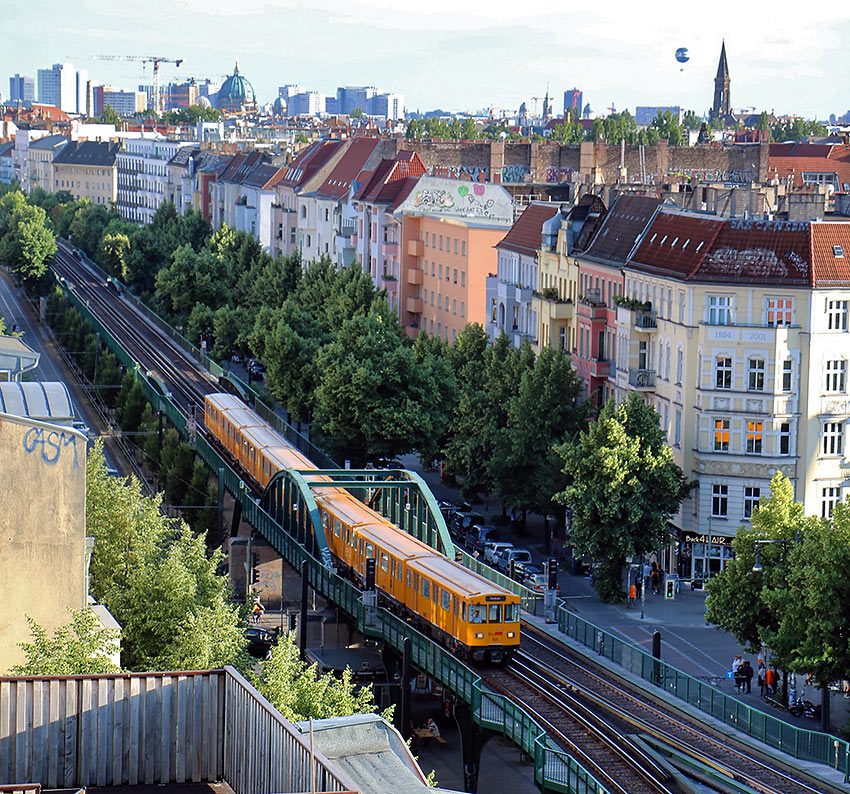
Into the Former East – My Selected Highlights
GDR Museum: The museum focuses on everyday life behind the Iron Curtain, and includes such exhibits as a Trabant Car (The GDR’s answer to West Germany’s Volkswagen) original furnishings, home accessories and food items.
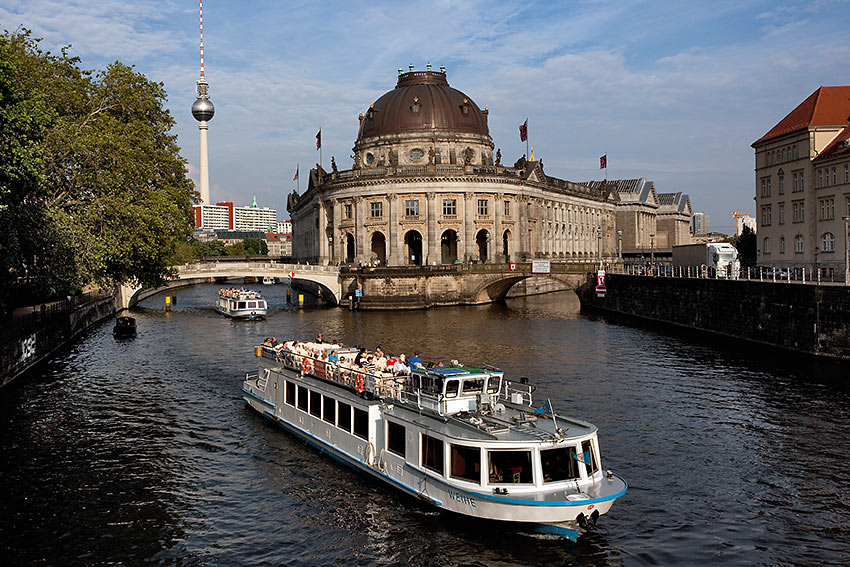
Museum Island, the name of an island in the River Spree, consists of five epic museums which collectively are a UNESCO World Heritage Site. Located on the original settlement of Berlin, some of the buildings were severely damaged during World War II and have been reconstructed. From classical antiquities to collections belonging to King Frederick William IV of Prussia, each building can be a full-day commitment. What can’t be missed is the Pergamon Museum, which hosts original-size, reconstructed monumental buildings such as the Pergamon Altar. While the Pergamon Altar is currently closed to the public due to restoration work, this fascinating 360-degree panorama by artist Yadegar Asisi will offer an emotional glance of what the ancient city of Pergamon would have looked like. Set in a specially designed temporary exhibition space of approximately 1000 m2, Asisi’s Panorama will create an immersive visual effect to be experienced in conjunction with 80 classical sculptures and nine multimedia visualizations of the Pergamon Altar. Constructed specially to house the Altar, the Pergamon Museum is Berlin’s most popular museum, attracting over one million visitors a year. The restoration work for the entire project, which began in 2013, is presently scheduled for completion in 2025–2026. The rooms in the southern wing of the museum, with the Ishtar Gate and Processional Way, the Roman Market Gate of Miletus, and the Museum of Islamic Art, continue to remain open.
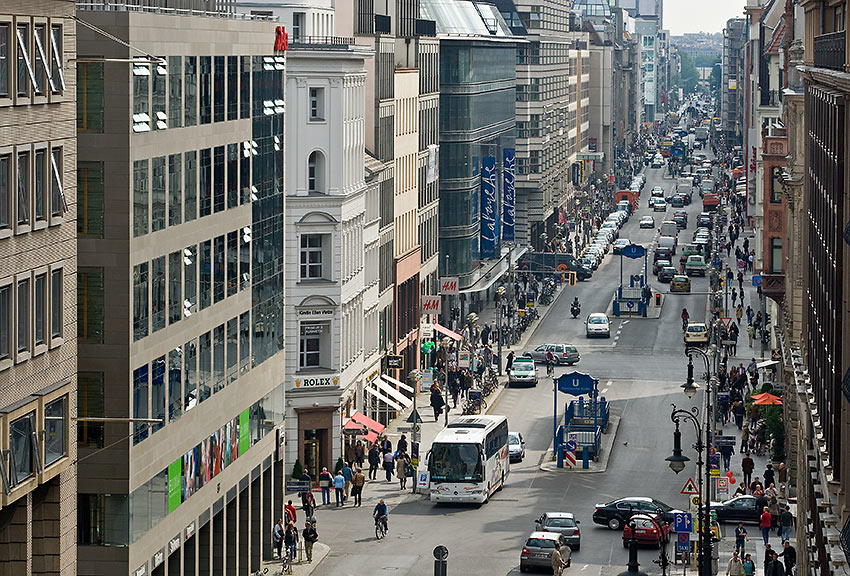
Friedrichstrasse, once Berlin’s most legendary shopping street, has enjoyed a Renaissance and is once again the home of elegant stores and boutiques.
STASI Museum: Modeled after the KGB, the Stasi was the GDR’s infamous secret police. Located in house # 1 of the terrifying former central complex of the Ministry of State Security, the museum showcases original offices, as well as diverse aspects of the political system and the opposition against it.
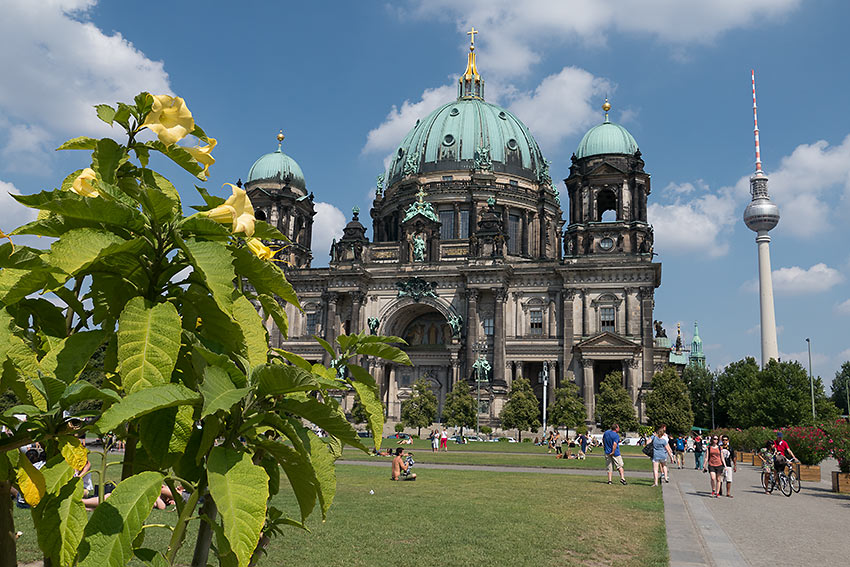
Berliner Dom is where the Prussian Royal Family came to worship and be buried. Nestled on the edge of Museum Island, a copper dome tops the magnificent cathedral. There’s also a staircase that leads to a viewing room, offering views of the central district. Look closely and you can still see Red Army bullet holes on its façade. In the former East, everything is preserved, while in the West, the period of 1932 – 1945 has been wiped off the earth, including that era in children’s history books.
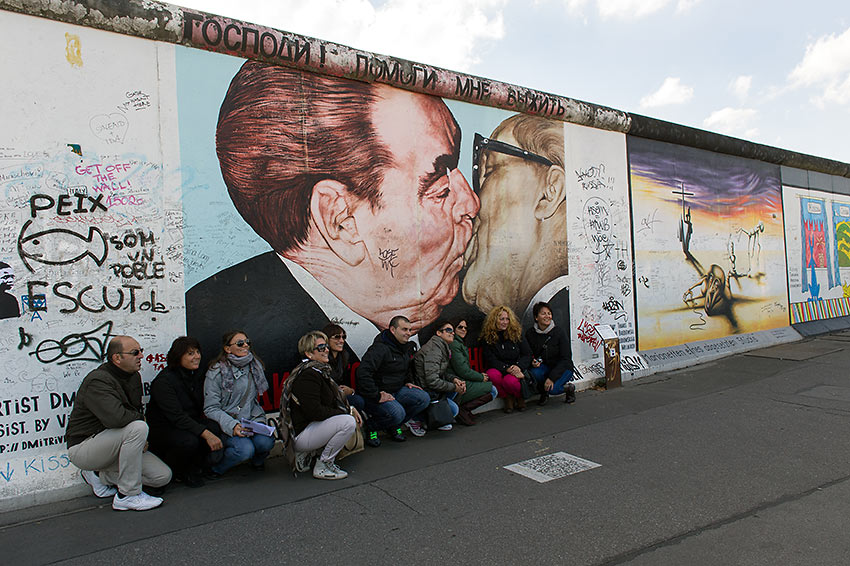
East Side Gallery: This is the longest remaining stretch of the Berlin Wall, decorated by 118 artists from 21 countries. Watching millennials play sports beside it, I thought of Ken Burns’ lecture to U.S. high school where he was stunned to find that most students thought WWll was fought between the U.S. and the Soviet Union, which led him to make the documentary, ‘War.’ The cynic in me wondered if the kids and millennials were unaware of Berlin’s past, too.
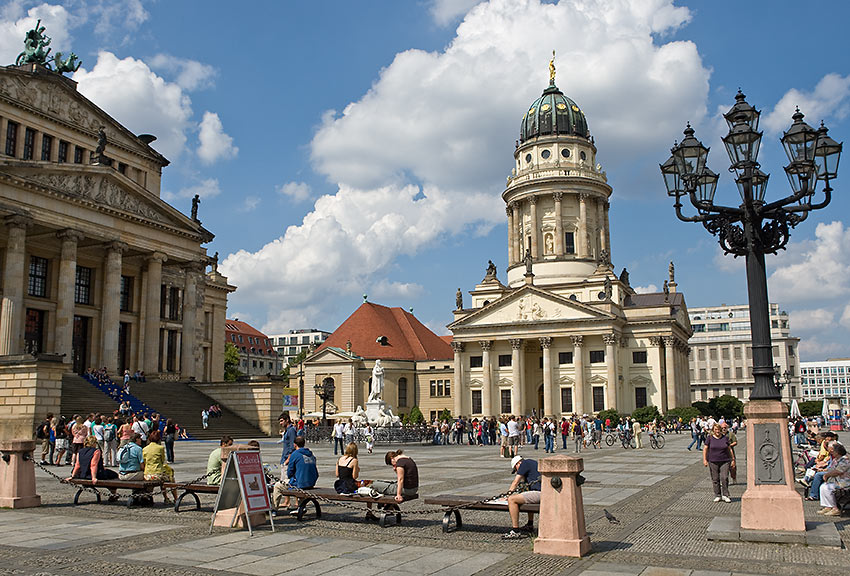
Gendarmarkt is considered by many as the most beautiful square in Germany. It features a concert hall and the German and French Cathedrals. Its Christmas market is one of the best in the world.
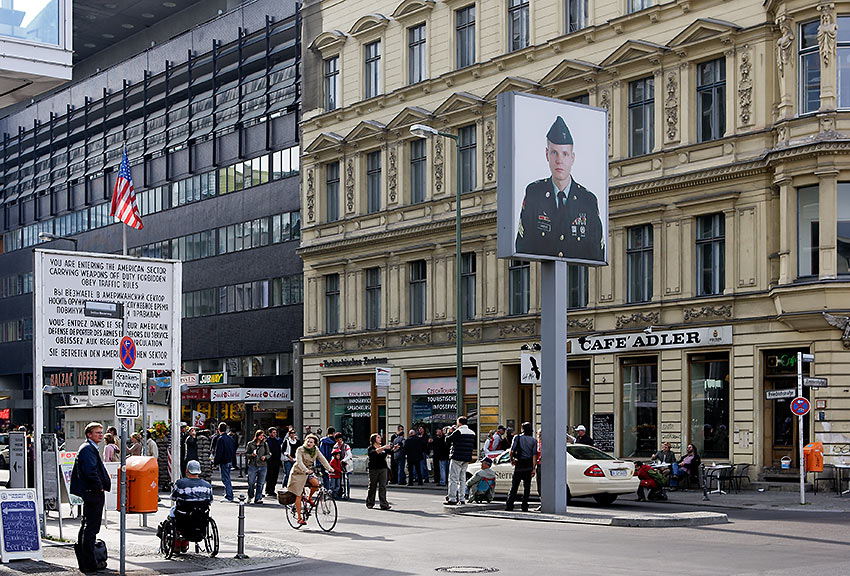
Wall Museum & Black Box at Checkpoint Charlie: The museum at Checkpoint Charlie features the Cold War, re-construction of the Wall, and the fight for human rights. Also located at Checkpoint Charlie, the Black Box informs the public about the history of the famous former border crossing point and the Cold War. This is the crossing where U.S. and Soviet tanks faced off for 16 hours in 1961 almost creating a third world war. Checkpoint Charlie can be touristic, but is still worth a visit.
Palace of Tears: Situated at a former border crossing station, the museum helps visitors understand the border experience and the steps toward reunification.
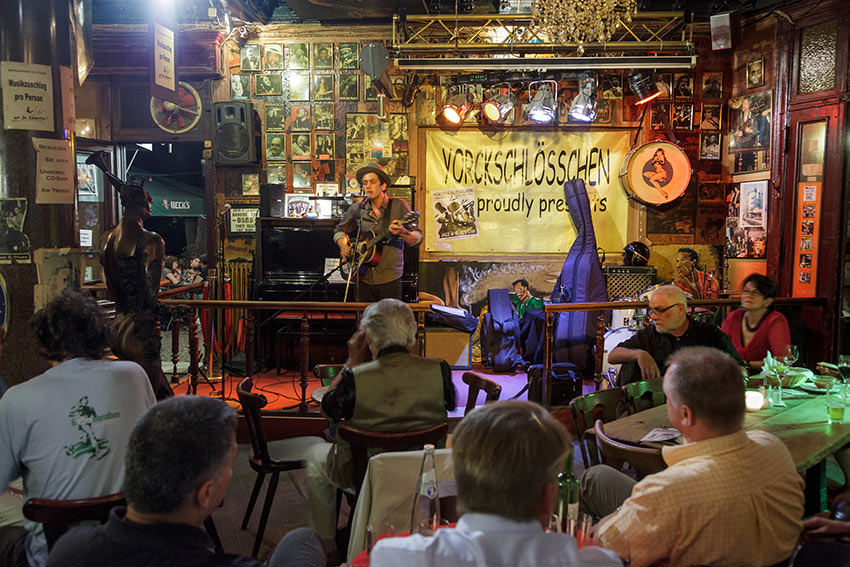
FOR A TASTE OF NOSTALGIA there’s an array of Ostalgie restaurants (combination of the German words for east and nostalgia) in the East, allowing diners to experience the food of the former DDR, complete with period utensils, furniture, posters and paintings. East German meals were often born out of necessity due to ingredient restrictions, so expect roasted pork, potatoes, pork knuckles with sauerkraut and meatballs. You know, the type of meals that only a Mutti could make. I once had an order of pork which was rather tough and grizzly, but absolutely enjoyed its authenticity. And there’s still plenty of street food such as mammoth pretzels and döner kebaps, with has surpassed currywurst, as the #1 food item in Berlin, both compliments of Turkish guest workers. Like an English Tea, coffee and cake is still a late afternoon tradition, but now generally served on the weekends. There are a number of cutting edge restaurants who offer vegetarian meals – there’s even a currywurst stand that is vegetarian – and re-imagined traditional Berlin and international dishes. And, of course, beer (brewed according to the Reinheitsgebot German Purity Law, which permits only water, hops, and malt as ingredients), wine and spirits, and there is no last call!
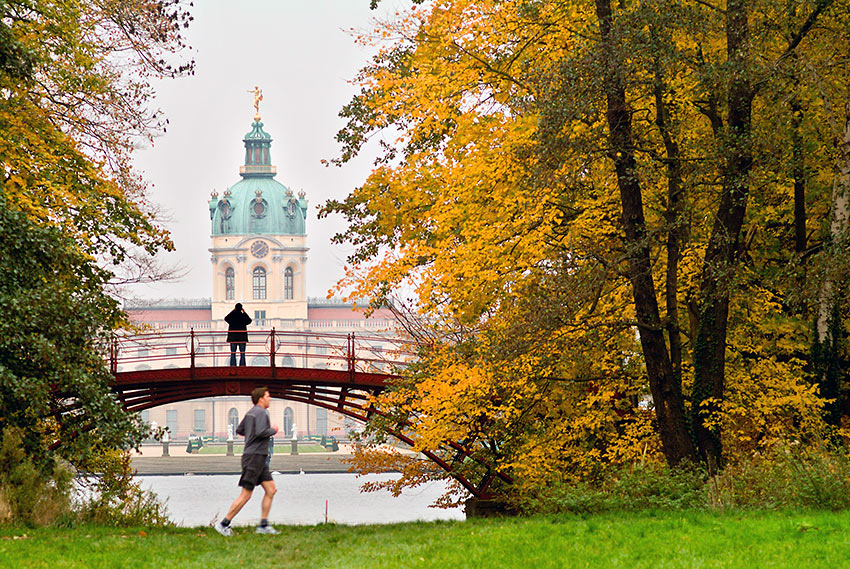
Here’s a fun article, courtesy Natalia Buitrago Gomez of All The Rooms: The Best Way to Spend Two Days in Berlin.
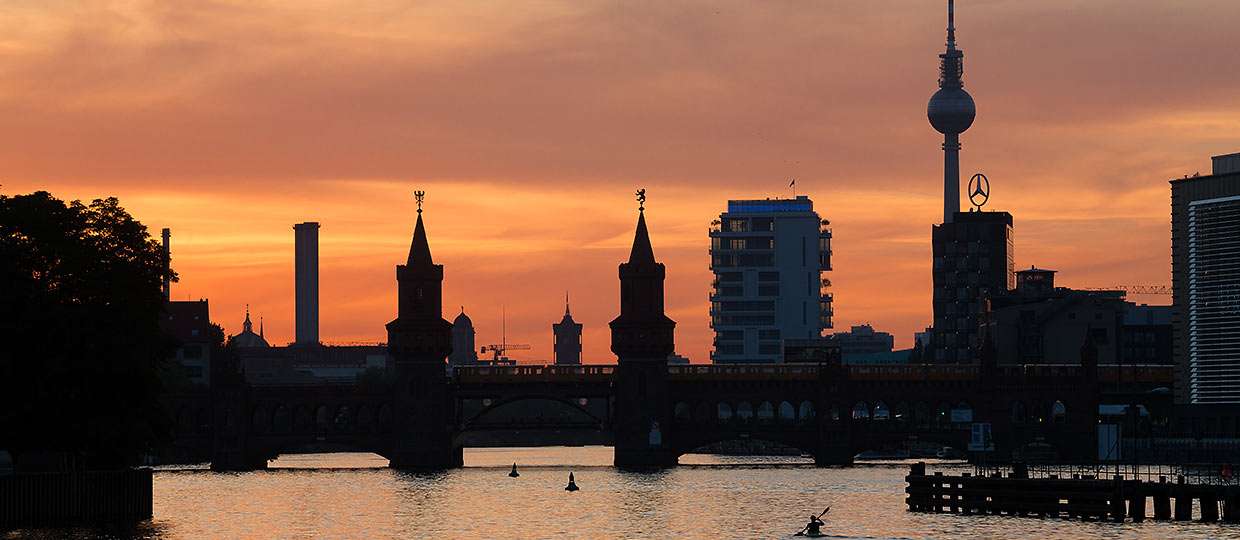
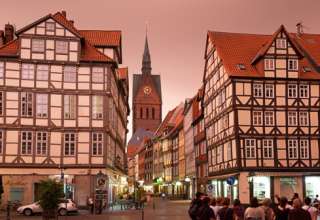
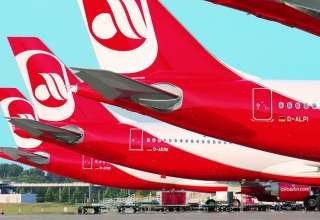
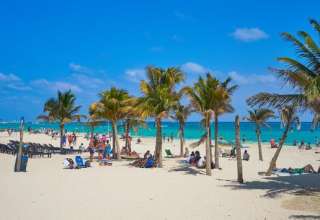






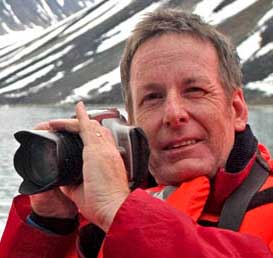
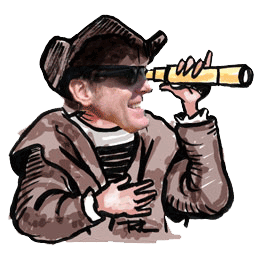
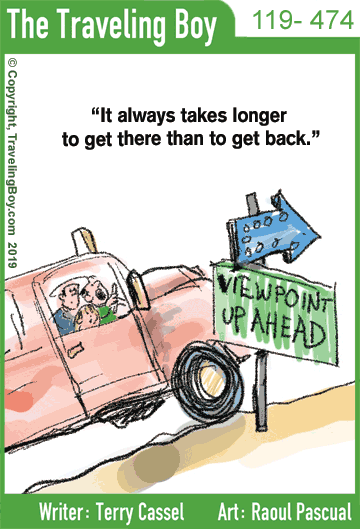














The Best Way to Spend Two Days in Berlin - The ATR Blog
July 2, 2018 at 2:29 am
[…] you from the planning with a full guide on how to spend two days in Berlin. From restaurants to historical sites to nightclubs, we have your […]